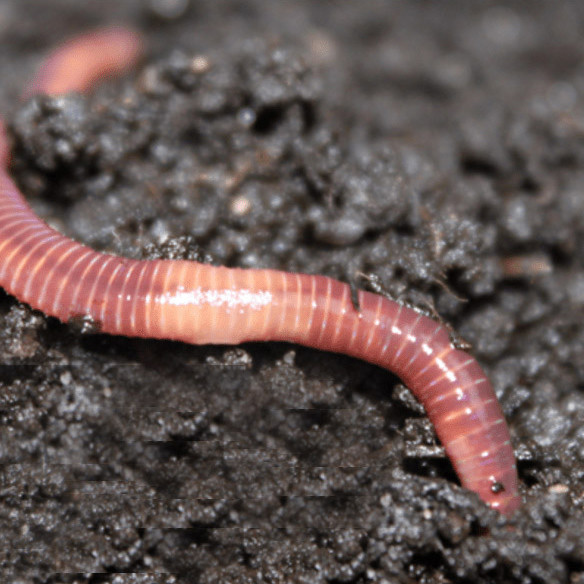Easy-to-care-for red worms: Transform organic waste
Easy-to-care-for red worms: Transform organic waste
Blog Article
Whatever You Need to Know About Red Wigglers for Composting
Red wigglers, or Eisenia fetida, play an essential function in the realm of composting, transforming natural waste right into beneficial dirt modifications. Their one-of-a-kind organic traits allow them to thrive in numerous conditions, making them a perfect choice for both beginner and seasoned composters alike. Understanding their needs and benefits is crucial for establishing an effective vermicomposting system. The procedure of establishing up a worm container and maintaining it can present difficulties. To properly harness the potential of these worms, one should explore the intricacies of their treatment and monitoring.
What Are Red Wigglers?

(Lake James Bait)
Native to The United States and copyright, red wigglers are surface-dwelling microorganisms that like wet, cozy environments rich in breaking down organic issue. Their diet consists largely of decomposing plant material, food scraps, and various other organic particles, which they eat and break down efficiently. As they absorb this product, they produce nutrient-rich spreadings that improve soil fertility.
Red wigglers are hermaphroditic, having both male and female reproductive organs, and can recreate promptly under ideal problems. On the whole, red wigglers are crucial factors to the procedure of recycling organic waste right into beneficial garden compost.
Advantages of Making Use Of Red Wigglers
Making use of red wigglers in composting systems uses many benefits that improve both the efficiency of waste monitoring and the quality of the resulting garden compost. These worms, medically referred to as Eisenia fetida, are specifically effective at breaking down raw material, turning kitchen area scraps and lawn waste into nutrient-rich compost at an increased price.
Among the primary benefits of utilizing red wigglers is their capacity to take in huge amounts of organic product, usually processing their weight in food waste daily. This high usage price causes quicker decomposition and minimizes the quantity of waste sent out to landfills. Moreover, the spreadings generated by red wigglers are rich in essential nutrients, useful bacteria, and enzymes, making them a superb fertilizer for yards and plants.
Additionally, red wigglers prosper in a selection of environments, making them adaptable for both indoor and outdoor composting systems - red wigglers. Their visibility in a garden compost container aids to freshen the material, preventing odors and promoting a healthy and balanced composting process. On the whole, utilizing red wigglers not just adds to effective waste management however likewise supports sustainable gardening practices through the production of top notch compost
(red wigglers for sale)
Establishing Your Worm Container
To efficiently establish up a worm container, it is necessary to pick a proper container that satisfies the demands of red wigglers while providing a conducive setting for composting. An ideal bin can be made from plastic, timber, or steel, with an ability of at the very least 1 square foot for every pound of worms.
Guarantee the container has sufficient drainage holes to stop excess moisture, as red wigglers grow in a damp, however not waterlogged, environment. red wigglers. The container needs to additionally be ventilated to offer adequate air movement, preventing anaerobic conditions that can hurt the worms
A perfect place for the worm bin is an awesome, dark area, free from straight sunlight and extreme temperatures, as red wigglers prefer a temperature read here variety of 55 to 77 degrees Fahrenheit.
Before presenting the worms, prepare bed linen products such as shredded newspaper, cardboard, or coconut coir, which will supply both habitat and food. Dampen the bed linens lightly to develop a welcoming atmosphere for the worms. Think about placing a cover on the bin to preserve humidity and lower parasites, while guaranteeing it can be quickly eliminated for maintenance.
Feeding and Care Standards
Feeding red wigglers is an important facet of preserving a healthy and balanced composting system. These worms prosper on a diverse diet, mostly composed of natural products such as fruit and veggie scraps, coffee premises, and crushed eggshells. It is necessary to stay clear of feeding them meat, dairy products, and oily foods, as these can produce unpleasant smells and attract pests.
When introducing food to your worm bin, slice or shred products into smaller items to help with quicker disintegration. Begin with percentages to gauge the worms' intake price, gradually boosting the quantity as they adjust. It is suggested to alternative feeding locations within the bin to encourage comprehensive blending and oygenation of the garden compost.

Troubleshooting Common Issues
Keeping a thriving worm composting system can in some cases offer obstacles that require focus and troubleshooting. Common concerns consist of an unpleasant smell, which often suggests overfeeding or the existence of anaerobic conditions. To remedy this, reduce the amount of food added and ensure proper oygenation by blending the bed linens product.
One more constant trouble is the escape of worms from the container. This can take place because of excessive moisture or improper environmental conditions. On a regular basis check the dampness degrees, aiming for a moist but not soggy consistency, and maintain optimum temperatures between 60-80 ° F(15-27 ° C )to produce a comfortable habitat for your red wigglers.
Bugs, such as fruit flies, can additionally invade worm bins. red wigglers. To fight this, cover food scraps with a layer of bed linens or shredded paper to deter flies from laying eggs. In addition, make certain that any type of food added is fresh and devoid of mold, which can bring in unwanted bugs
Last but not least, if your worms appear inactive, check for stress and anxiety variables such as temperature fluctuations or insufficient wetness. Addressing these usual problems will aid maintain a healthy and efficient worm composting system.
Conclusion
In summary, red wigglers, or Eisenia fetida, play a vital role in lasting waste administration with vermicomposting. Correct setup and maintenance of a worm bin, along with adherence to feeding standards, ensure a growing community that decreases landfill contributions.
Report this page